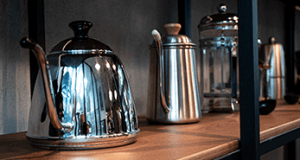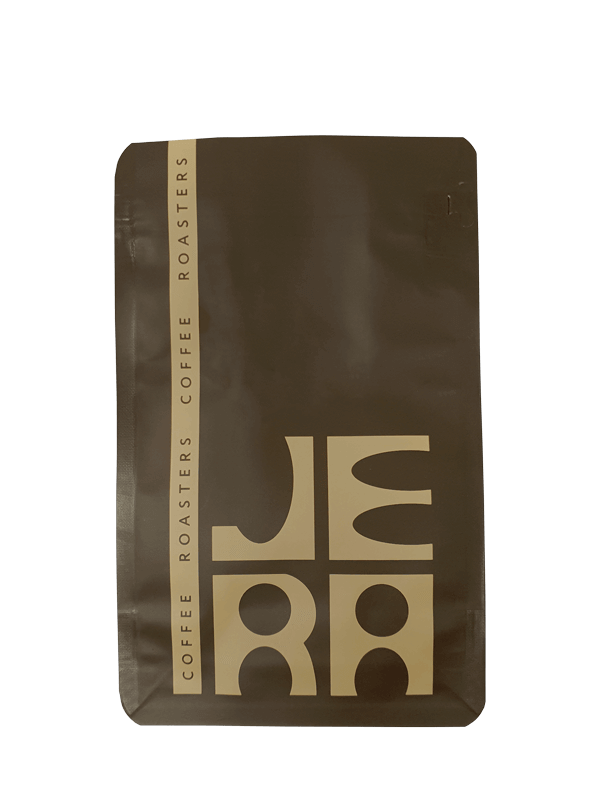ברזיל | Mogiana
קפה חד זני מברזיל
מאוזן, "קפה לכל יום", מתקתק, עמוק, רך ושוקולדי. מתאים להכנת אספרסו, מקינטה, קפה שחור או משקאות בסיס חלב.
₪48.00 – ₪190.00
ברכישת כל סוגי קפה קלוי בסכום:
בין 600 ש"ח ל-1000 ש"ח עם קוד קופון "15%" תקבלו 15% הנחה
בין 1001 ש"ח ל-1500 ש"ח עם קוד קופון "25%" תקבלו 25% הנחה
מעל 1501 ש"ח עם קוד קופון "30%" תקבלו 30% הנחה
קפה מברזיל
ברזיל שומרת על מעמדה כמובילה העולמית בייצור קפה במשך יותר מ-150 שנה, ואחראית
לכשליש מתפוקת הקפה העולמית הכוללת.
בברזיל מגדלים כ-80% ערביקה וכ-20% רובוסטה. אזורי הגידול המרכזיים של ערביקה הם המדינות מינאס ז'ראיס וסאו פאולו, שמחולקות לאזורים גאוגרפיים קטנים יותר: סול דה מינאס, סרדו ומוג'יאנה. את הרובוסטה מגדלים בעיקר במדינות אספיריטו סנטו ורונדוניה.
שיטות העיבוד הנפוצות ביותר בברזיל הן עיבוד טבעי (יבש) וסמי-וושד (חצי רטוב). שיטות אלה תורמות לרמת מתיקות גבוהה ולגוף עשיר ומלא של הקפה.
באופן כללי, הקפה הברזילאי מתאפיין ברמת חמיצות נמוכה עם טעמי שוקולד ואגוזים דומיננטיים.
עיבוד קפה בשיטת סֶמִי-וָואשְד (פּוּלְפְּד נֵייטְשְרַל)
שיטת הסמי-וושד היא טכניקת עיבוד שבה קליפת הדובדבנים מוסרת תחילה, ולאחר מכן גם הריר (mucilage) מוסר באופן מכני באמצעות מכשיר מיוחד הנקרא דֶמוּסִילַאגֶ'ר.
המכשירים הללו הופכים את עיבוד הקפה ליעיל וידידותי יותר לסביבה — אך הם גם יקרים מאוד, ולעיתים עולים עשרות אלפי דולרים, מה שמקשה על חוות קטנות להשתמש בהם.
הסרה מכנית של הריר מאפשרת קבלת פולים באיכות גבוהה תוך צמצום הפגיעה בסביבה. כתוצאה מכך, שיטה זו הופכת לפופולרית יותר ויותר.
קפה שמעובד בשיטה זו משלב את המתיקות הבולטת האופיינית לעיבוד הטבעי (יבש), עם גוף קל יותר, המזוהה עם קפה בעיבוד רטוב.
באופן כללי, קפה בעיבוד סמי-וושד מתאפיין בחמיצות מעוגלת יותר — פחות הדרית ויותר שוקולדית — ומשיג איזון בין בהירות לעושר
Coffee of Brazil
Brazil has held the leading position in global coffee production for over 150 years, accounting for about one-third of the world's total coffee output.
In Brazil, approximately 80% of the coffee grown is Arabica and 20% is Robusta. The main Arabica-producing regions are the states of Minas Gerais and São Paulo, which are further divided into smaller geographic zones: Sul de Minas, Cerrado, and Mogiana. Robusta is primarily cultivated in the states of Espírito Santo and Rondônia.
The most common processing methods in Brazil are natural (dry) and pulped natural (semi-washed). These methods contribute to the coffee's high sweetness and rich, full body. Overall, Brazilian coffee tends to have low acidity with dominant flavor notes of chocolate and nuts.
Semi-Washed (Pulped Natural) Coffee Processing
The semi-washed method is a processing technique when coffee cherries are first stripped of their outer skin and then have their mucilage mechanically removed using special equipment called a demucilager.
Demucilagers make coffee processing more efficient and environmentally friendly — but they’re also quite expensive, often costing tens of thousands of dollars, which makes them inaccessible to the small farms.
Mechanical mucilage removal allows for higher quality beans while minimizing the environmental impact. As a result, this method is becoming increasingly popular.
Coffee produced with the semi-washed method combines the pronounced sweetness typical of natural (dry) processing with the lighter body associated with washed beans.
In general, semi-washed coffee offers a more rounded acidity — less citrusy, more chocolatey — striking a balance between brightness and richness.












